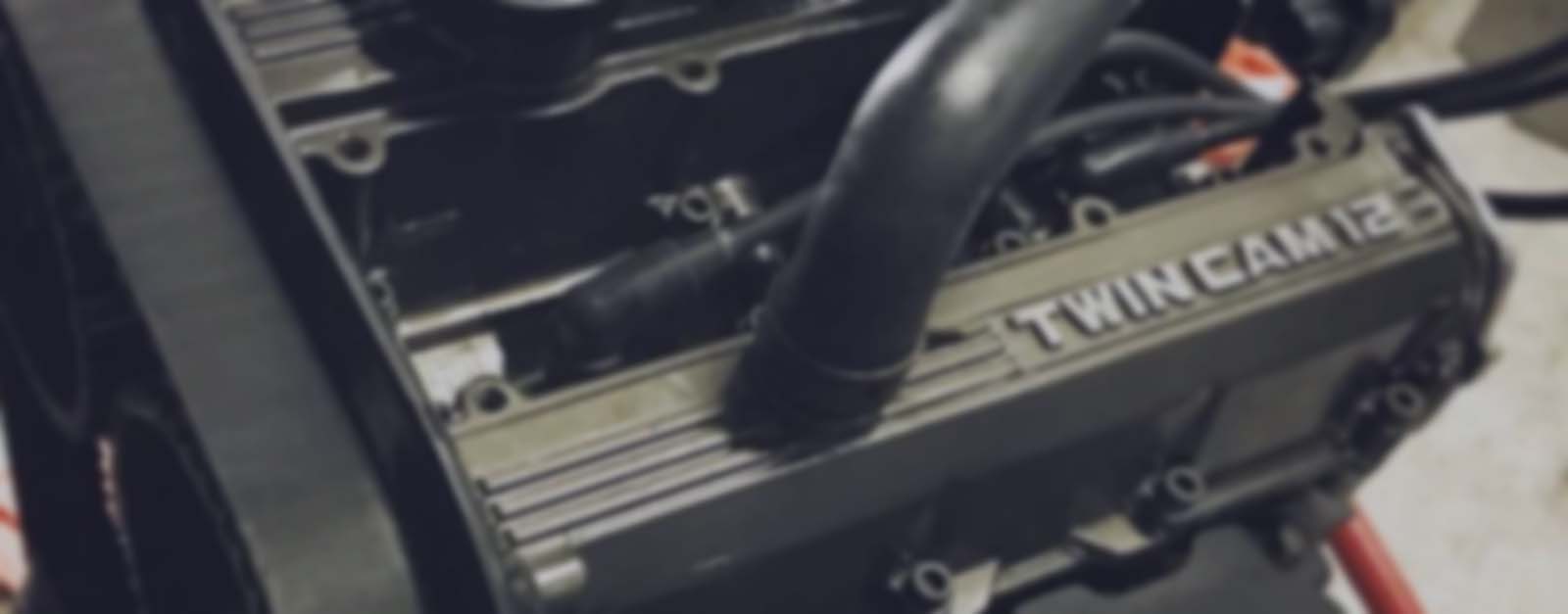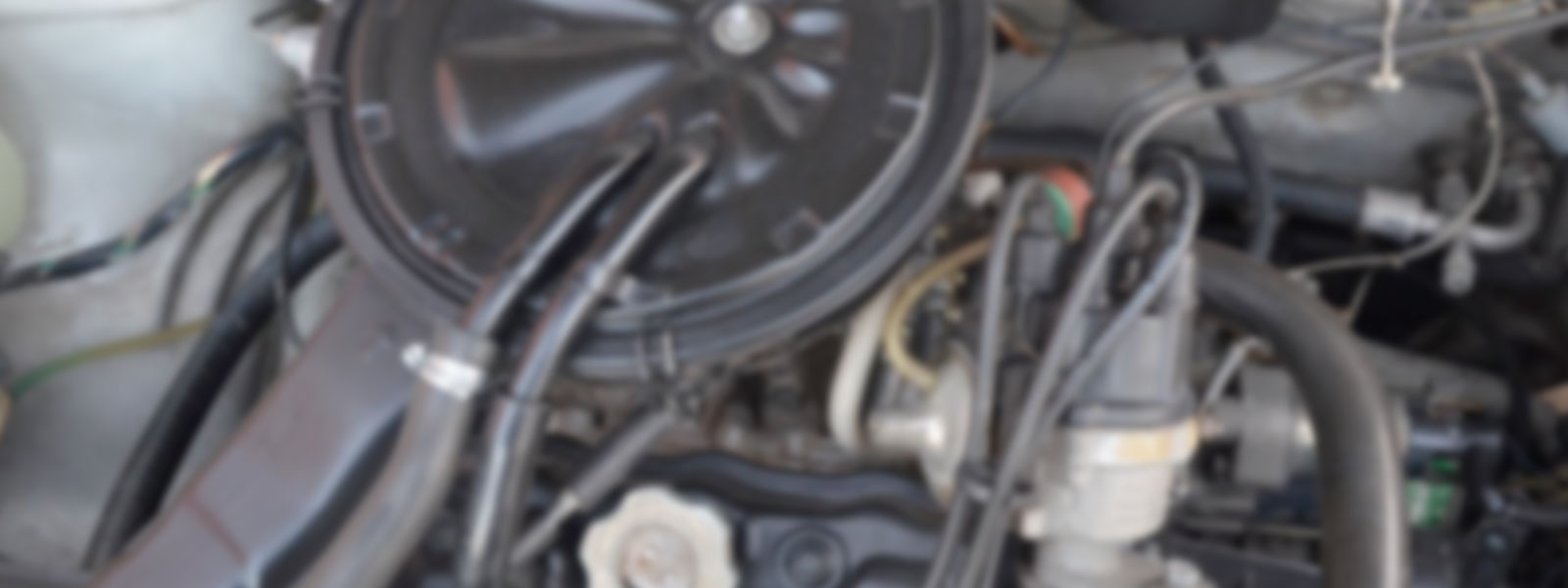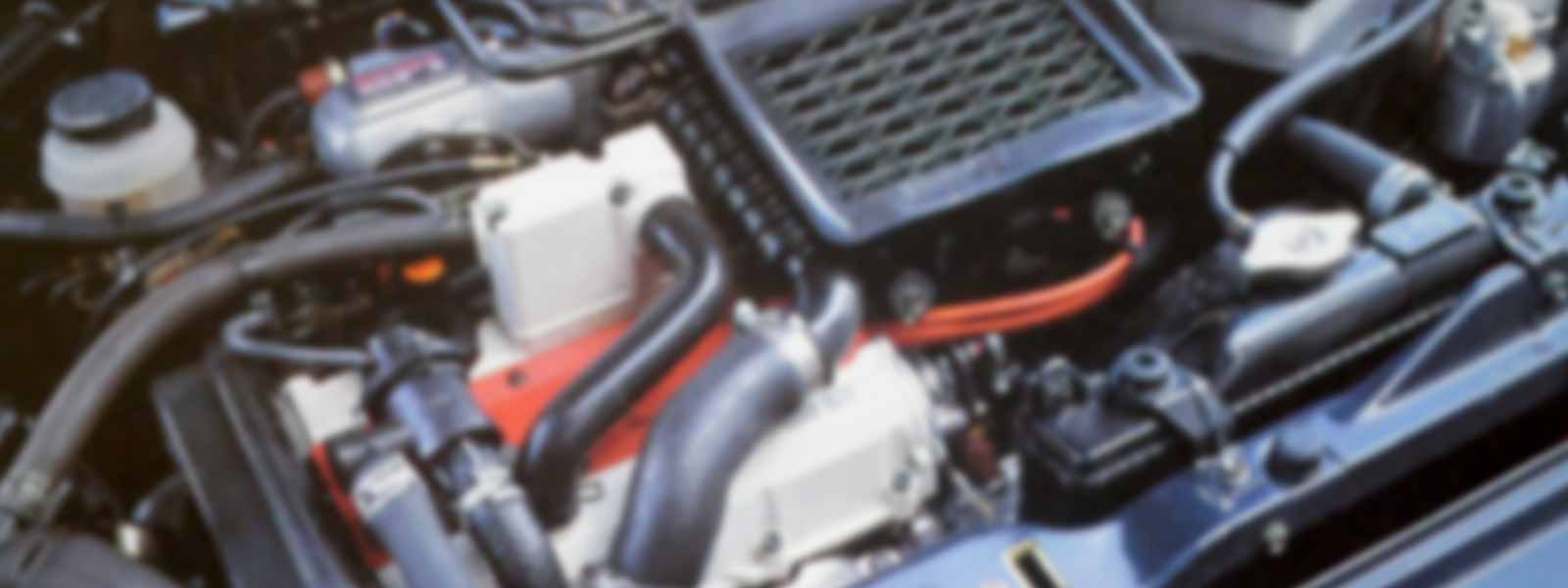
Common engine conversions
This article aims to get you started on the path towards replacing the asthmatic standard engine in your MightyBoy. It is not a list of every possible conversion, or a comprehensive set of instructions for installation, although we do hope to be able to publish more detailed guides in the future.
Engines conversions are grouped into two categories - naturally aspirated and turbocharged. Where an engine exists in N/A and turbo form, only the turbo version is covered. Let's face it, if you have the option you're gonna want more power, right?
Difficulty scale:
The difficulty scale in this article runs from 1 (easiest) to 5 (hardest) and is based on the assumption that the person doing the conversion has decent mechanical knowledge, some ability to fabricate small parts (brackets and mounts), and access to appropriate tools.
Estimated budget:
Estimates are a rough indication of costs involved in completing a conversion to a roadworthy standard, including quality second hand parts where practical (engine/gearbox) or a donor vehicle at a reasonable price. It also assumes fabrication of small parts at little/no cost. Budgets do not factor in costs such as engine rebuilds, certification of the conversion or registration inspection fees. If you plan on paying someone to do the work, you can expect the costs to be double, if not triple in some cases.
Standard engine specifications
Engine code: F5A
Capacity: 543 cc
Cylinders: 3
Valve train: SOHC, 6 valve
Fuel system: Carburettor
Power: 22 kw
Torque: 38 nm
Transmission: 4MT/2AT
Please note:
All of the engine conversions listed on this page require certification by a qualified engineer to be legal for road use, as they exceed the capacity and power limits specified in current Australian DOTARs legislation - the National Code of Practice (NCOP) for Light Vehicle Modifications. Before you start an engine conversion you should consult with your state's transport department, and the local engineering signatory that will be certifying your conversion.

Naturally aspirated engines
The following engines are larger in capacity than a standard MightyBoy, and offer moderate increases in horsepower and torque, with generally less complicated installation requirements than turbocharged engines.
F8B (Suzuki Alto/Hatch 1983-88)
This is by far the most common and simple upgrade for a MightyBoy.
It is a direct bolt in solution that increases power by over 40%. Assuming you have all the parts you need, the entire job will take less than a day. (Maybe a weekend if you take your time.)
It is possible to do the conversion with just a bare F8B motor, manifolds, carburettor and distributor, however it is far more worthwhile to use the F8B gearbox and radiator as well. The F8B gearbox has a taller final drive which means less RPM at any given speed, and the F8B radiator is thicker than the standard F5A unit.
The best method of completing the conversion is to obtain an entire Hatch/Alto, so you have all the parts you need. The driveline transplants directly without modification, however you are best to use the original MightyBoy engine mounts and brackets as there are some differences to those used in a Hatch/Alto. Replacing the old engine mounts is also advised.
Suitable Hatch and Alto models are getting more difficult to find, as are F8B engines and gearboxes. Engine rebuild kits and spare parts are all readily available for this motor, as it is still used widely in India.
Note: New F8B engines are available through services such as Alibaba/Ali Express, often with fuel injection and/or 5 speed gearboxes. These engines have proven tricky to obtain, and shipping is quite expensive. The quality is yet to be confirmed.
Engine code: F8B
Capacity: 796 cc
Cylinders: 3
Valve train: SOHC, 6 valve
Fuel system: Carburettor
Power: 29 kw
Torque: 59 nm
Transmission: 4MT/2AT
Conversion
Difficulty: 1/5
Estimated budget: $1000+
F8C (Daewoo Matiz 1999-2005)
The Daewoo Matiz uses a derivative of the Suzuki F8B engine, equipped with fuel injection and a 5 speed gearbox. It offers almost double the power of a standard MightyBoy engine.
Although the size of the engine itself is identical to an F8B, installation is more complex due to the height of the inlet manifold, differences in engine mounts, and driveshafts that aren't compatible with MightyBoy hubs.
Upgrades are required to fuel lines and fuel pump to cope with fuel injection, and the wiring/ECU must also be transplanted. It is also easier to swap in the front hubs/suspension from the donor vehicle to make installation easier. For this reason it is recommended to buy a whole Matiz to provide the parts you will need. They can be bought for under $1000, and like the F8B, spare parts are still readily available.
Engine Code: F8C
Capacity: 796 cc
Cylinders: 3
Valve train: SOHC, 6 valve
Fuel system: Multi point injection
Power: 38 kw
Torque: 69 nm
Transmission: 5MT/3AT
Conversion
Difficulty: 3/5
Estimated budget: $2500+
G10A (Suzuki Swift/Cino 1983-99)
Like the F8B, G10A conversions are also quite common. The key benefits of this conversion are an increase in torque and the 5 speed gearbox with tall gearing.
The conversion is best done using the engine cradle (subframe) from an automatic MightyBoy, as it is slightly wider and has more suitable locations for bolting up the gearbox. A mount for the gearbox will need to be fabricated, however the standard F5A pulley-side bracket can be adapted to work, and the rear lower mount lines up when replaced with a Suzuki Sierra engine mount.
The G10A has electronic ignition and a low pressure electric fuel pump, so bear that in mind when considering the wiring. The exhaust system will need to be reconfigured too. Early model engines (1983-88) are preferable, as the driveshaft splines match with Mightyboy hubs. Later models (1989+) are distinguished by their narrow alloy rocker cover. Older models used pressed steel similar to a MightyBoy.
Donor vehicles are pretty cheap and easy to find, as they're the least desirable Swift to own. Spare parts are readily available locally and not overly expensive.
Note: A turbocharged variant of the G10A was available in North America, fitted to several GM derivatives of the Swift. These engines (and turbo equipment) are rare and difficult to source.
Engine code: G10A
Capacity: 996 cc
Cylinders: 3
Valve train: SOHC, 6 valve
Fuel system: Carburettor
Power: 38 kw
Torque: 80 nm
Transmission: 5MT/3AT
Conversion:
Difficulty: 2/5
Estimated budget: $1500+
G13BA (Suzuki Swift/Cino 1985-99)
The G13BA is the larger sibling of the G10A, with an extra cylinder tacked onto the end of the engine. It is one of the least common engine conversions due to the width of the drivetrain exceeding the dimensions of a standard MightyBoy engine bay.
Found in Suzuki Swift and Cino models, the G13BA is an all-aluminium 4 cylinder engine. The overall width of the engine and gearbox is around 50mm too wide for a MightyBoy engine bay, and requires cutting and reshaping the side rails. Engine mounting points are also completely different to F series engines, which means cutting the engine mounts from a donor vehicle and plating the MightyBoy engine bay before welding them in. Otherwise the installation is not too dissimilar to the G10A in terms of wiring and fuel. A brake upgrade is a must for the added weight and power.
The cost of buying a donor vehicle is pretty low, and examples can be found for a few hundred dollars. Due to the nature of the modifications to the engine bay it is definitely worthwhile consulting with an engineering signatory before you tackle the job!
Engine code: G13BA
Capacity: 1298 cc
Cylinders: 4
Valve train: SOHC, 8 valve
Fuel system: Carburettor
Power: 50 kw
Torque: 101 nm
Transmission: 5MT/3AT
Conversion:
Difficulty: 4/5
Estimated budget: $2000+
G13B (Suzuki Swift GTi 1986-99)
This is the twin cam version of the G13BA engine, with a significant increase in performance over its single cam sibling. The conversion is made more difficult by the wider head and larger inlet manifold.
Overall installation is more or less the same as for a G13BA, noting that there are additional considerations of upgrading fuel lines and electrics for the fuel injection and ECU. The twin cam head is also much wider than the G13BA, and the inlet manifold position requires firewall modifications on top of cutting the sides out of the engine bay to accomodate the length of the engine and gearbox. Bigger brakes (and a brake booster) are an absolute requirement.
Engines and gearboxes are beginning to become scarce as GTi enthusiasts are buying up most available parts. Full cars are also fetching prices starting from the low thousands. Spare parts are readily available at reasonable prices.
Engine code: G13B
Capacity: 1298 cc
Cylinders: 4
Valve train: DOHC, 16 valve
Fuel system: Multi point injection
Power: 74 kw
Torque: 113 nm
Transmission: 5MT
Opening Hours
Difficulty: 5/5
Estimated budget: $3500+

Turbocharged engines
These engines are larger in capacity compared to a standard MightyBoy, and offer much higher horsepower and torque through the addition of forced induction. Installation is often complicated due to the need for electronic engine management, along with upgrades to fuel and electrical systems.
F6A/K6A (Suzuki Alto/Kei 1993-2004)
The most common of all turbocharged engine conversions, the F6A (and later model K6A) is relatively easy to obtain through Yahoo Japan. F6A and K6A engines are available in single cam and twin cam variants, but this makes little difference to installation.
The twin cam variant is the preferred option for performance, and is significantly nobbled by Suzuki to fit kei car legislation in Japan. These engines are capable of 150 hp+ when properly configured and tuned.
Depending on your method of installation (and engineer's requirements) you will need to either graft the engine cradle from the donor car into the MightyBoy, or make custom engine mounts to adapt the engine to the original MightyBoy subframe mounting positions. In any case, the easiest way to get almost everything you need for the conversion is to purchase a front cut. Due to the increasing costs of transport, not many importers are bringing front cuts into the country as they are much more bulky than a bare drivetrain.
Additional required upgrades are, larger fuel lines, an EFI fuel pump (and surge tank), and front brakes. The exhaust system will need to be reconfigured. Service parts including filters, plugs, belts and oils are available locally, however other items such as hoses, seals and gaskets will need to be imported from Japan.
Engine code: F6A/K6A
Capacity: 657 cc
Cylinders: 3
Valve train: DOHC, 12 valve
Fuel system: Multi point injection
Power: 47 kw (factory limited)
Torque: 91 nm
Transmission: 5MT
Conversion
Difficulty: 3/5
Estimated budget: $4000+
F6B (Suzuki Cervo Mode 1994-98)
The F6B was a short-lived 4 cylinder engine used in a single model of Suzuki, the Cervo Mode. While not the most common engine conversion, enough of them snuck into Australia to make it worthwhile including this engine here.
Installation is much the same as for an F6A as the overall dimensions of the engine are almost identical. However rarity works against the F6B, with parts being difficult and expensive to obtain. Likewise, technical information on this motor has proven to be elusive, which makes maintenance and repairs difficult.
Engine code: F6B
Capacity: 658 cc
Cylinders: 4
Valve train: DOHC, 16 valve
Fuel system: Multi point injection
Power: 47 kw (factory limited)
Torque: 95 nm
Transmission: 5MT
Conversion
Difficulty: 3/5
Estimated budget: $4000+
EF series (Daihatsu kei cars 1992-2007)
Daihatsu EF engines are an alternative to Suzuki conversions, mostly chosen based on availability and personal preference. They they offer a performance or reliability improvements over Suzuki's kei offerings, but in some cases are easier to find. EF engines were fitted to most Daihatsu kei cars, including Mira and Cuore.
As all kei cars are built to the same regulations, Daihatsu EF engines are close to Suzuki F6A engines in terms of installation requirements. Upgrades to fuel systems and electrics are needed, and driveshafts will need to be customised/adapted, along with the exhaust system.
EF series engines were built in SOHC 6 valve and DOHC 12 valve versions, with the EF-DET the highest performance variant.
Engine code: E/J series
Capacity: 659 cc
Cylinders: 3
Valve train: DOHC, 12 valve
Fuel system: Multi point injection
Power: 47 kw (factory limited)
Torque: 92 nm
Transmission: 5MT
Opening Hours
Difficulty: 3/5
Estimated budget: $4000+
CB21/61 (Daihatsu Charade 1986-88)
Daihatsu conversions are somewhat common, depending on availability (and the owner's interest in purity). Older CB series engines were available with a carburettor-fed turbocharged system, which simplifies installation at the expense of reliability and performance when compared to other fuel injected options.
The physical size of the engine and gearbox are similar to the G10A covered earlier in this article, however the Daihatsu engine uses a mounting system more like a G13, which requires substantially more fabrication work than a G10A.
Added difficulties include the need for custom driveshafts and brake upgrades. Parts for this motor (particularly turbo and fuel system components) are becoming increasingly rare.
Engine code: CB21/61
Capacity: 993 cc
Cylinders: 3
Valve train: SOHC, 6 valve
Fuel system: Carburettor
Power: 50 kw (factory limited)
Torque: 106 nm
Transmission: 5MT
Conversion:
Difficulty: 3/5
Estimated budget: $3000+
CB70/80/90 series (Daihatsu Charade)
If outright performance is your goal then you won't find a better engine that (only JUST) squeezes into a MightyBoy engine bay with a few modifications.
Sourced from 1990s Japanese Daihatsu Charade models, this engine is an absolute powerhouse when unshackled from its factory limitations. It is also an extremely tight fit, and an exercise in trying to fit a square peg into a round hole. Installation requires the fabrication of engine mounts, which must be plated and welded to the engine bay. It also requires subframe mods and some 'adjustments' to the engine bay sheet metal to provide sufficient clearance for the manifolds, gearbox and turbo components.
The fuel injection system requires upgrades to fuel lines, and the addition of a high pressure fuel pump. Engine management needs to come from a donor vehicle, or aftermarket. Brake upgrades are a necessity.
Engines are becoming increasingly difficult to find in Japan, and spare parts are just as hard to track down.
Engine code: CB70/80/90
Capacity: 993 cc
Cylinders: 3
Valve train: DOHC, 12 valve
Fuel system: Multi point injection
Power: 74 kw (factory limited)
Torque: 126 nm
Transmission: 5MT
Conversion
Difficulty: 5/5
Estimated budget: $4000+

